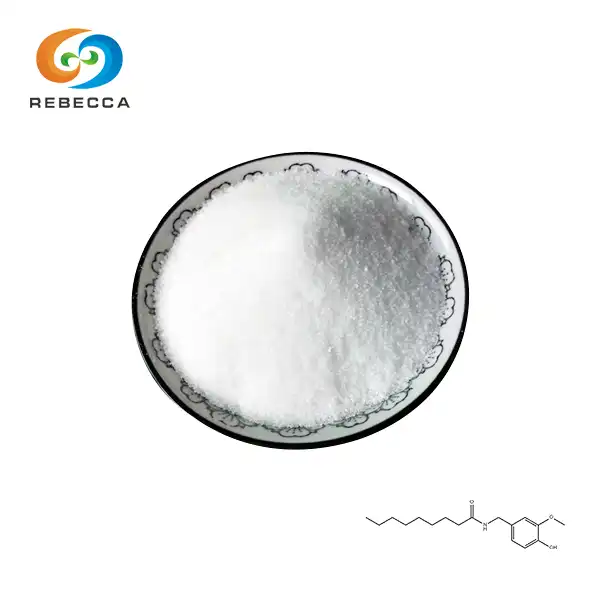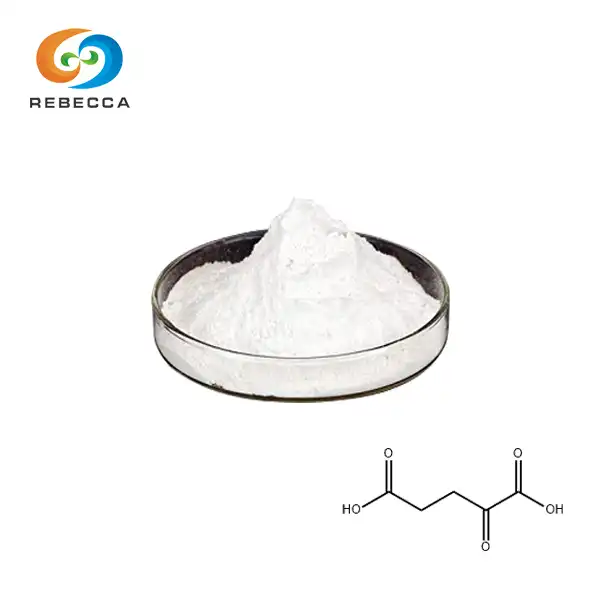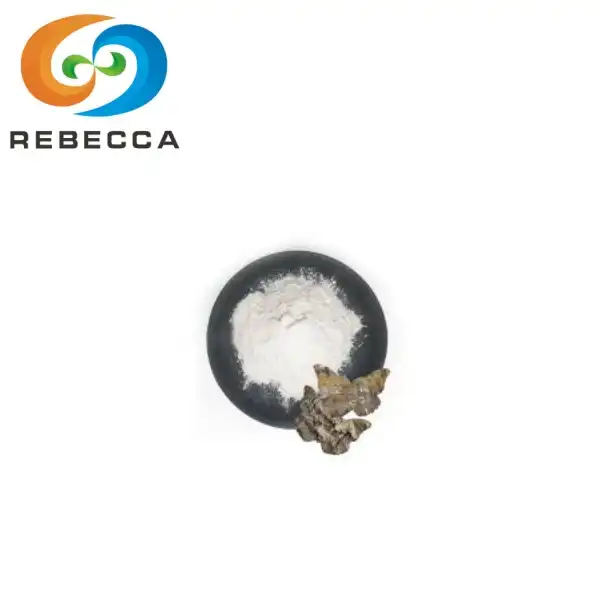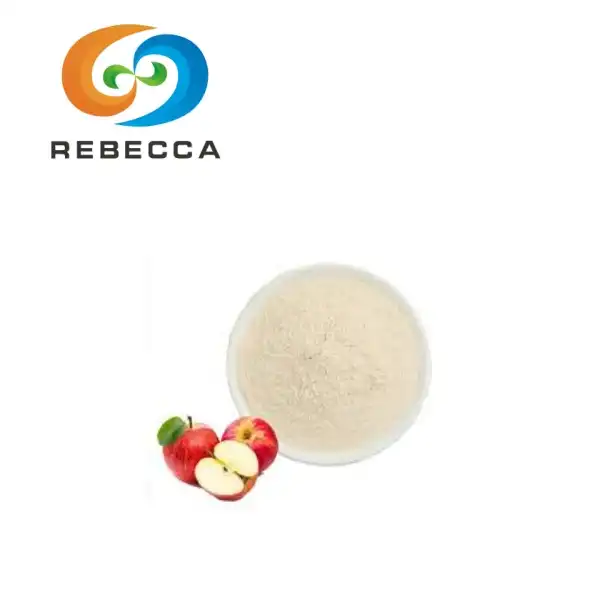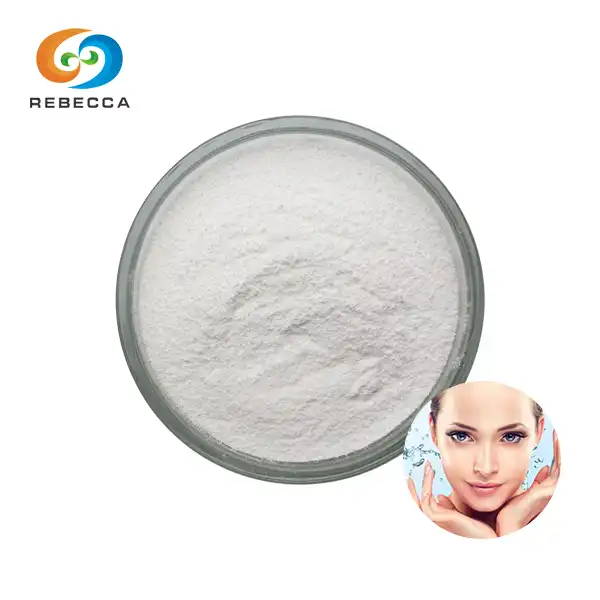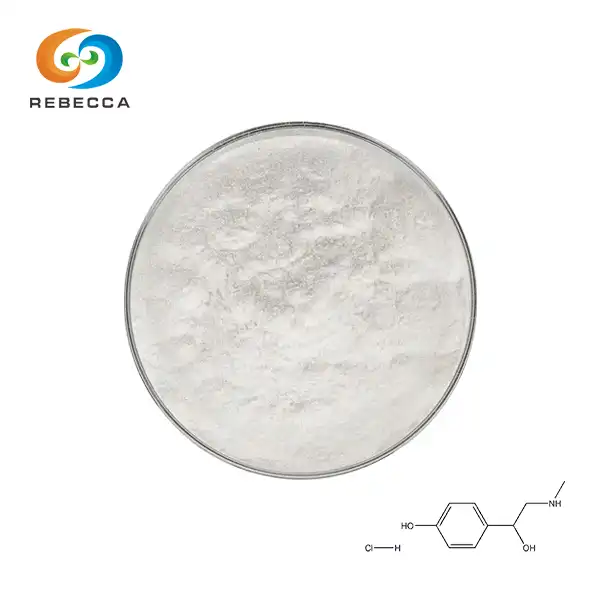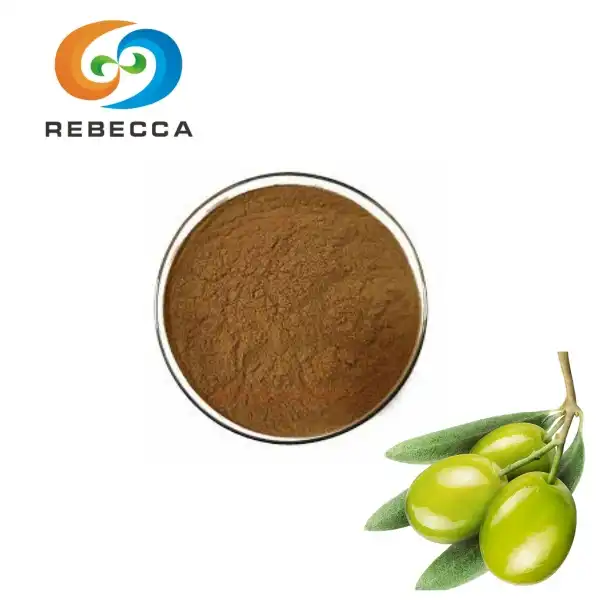How Acid Carnosic Works as a Potent Antioxidant?
In the world of natural antioxidants, acid carnosic stands out as a powerful compound with remarkable properties. Found primarily in rosemary (Rosmarinus officinalis) and sage (Salvia officinalis), this labdane-type diterpene has garnered significant attention for its potent antioxidative capabilities. As we delve into the intricacies of how acid carnosic functions as an antioxidant, we'll explore its benefits, applications, and the latest research surrounding this fascinating molecule.

Key Antioxidant Benefits of Acid Carnosic Explained
Acid carnosic, also known as carnosic acid, exhibits exceptional antioxidant properties that make it a valuable compound in various industries. Let's examine the key mechanisms through which acid carnosic exerts its antioxidant effects:
Free Radical Scavenging
One of the primary ways acid carnosic acts as an antioxidant is through its ability to scavenge free radicals. These unstable molecules can cause oxidative stress and damage to cellular components. Acid carnosic neutralizes free radicals by donating electrons, effectively stabilizing them and preventing further damage to cells and tissues.
Lipid Peroxidation Inhibition
Acid carnosic has demonstrated remarkable efficacy in inhibiting lipid peroxidation. This process occurs when free radicals attack lipids in cell membranes, leading to cellular damage and potentially contributing to various diseases. By preventing lipid peroxidation, acid carnosic helps maintain cellular integrity and function.

Metal Chelation
Another important aspect of acid carnosic's antioxidant activity is its metal chelating ability. Certain metal ions, such as iron and copper, can catalyze oxidative reactions. Acid carnosic can bind to these metal ions, reducing their pro-oxidant effects and further contributing to its overall antioxidant capacity.
Activation of Antioxidant Pathways
Interestingly, acid carnosic not only acts as a direct antioxidant but also stimulates the body's own antioxidant defenses. It has been shown to activate the Nrf2 pathway, a key regulator of cellular antioxidant responses. This activation leads to increased production of endogenous antioxidant enzymes, enhancing the body's overall ability to combat oxidative stress.

Applications of Acid Carnosic in Health and Wellness
The potent antioxidant properties of acid carnosic have led to its exploration in various health and wellness applications. Let's explore some of the most promising areas where this compound is making a significant impact:
Neuroprotection
Acid carnosic has shown potential in protecting neuronal cells from oxidative damage. Studies suggest that it may help prevent or slow the progression of neurodegenerative diseases such as Alzheimer's and Parkinson's. Its ability to cross the blood-brain barrier makes it particularly valuable in this context.

Cardiovascular Health
The antioxidant effects of acid carnosic may contribute to improved cardiovascular health. By reducing oxidative stress and inflammation in blood vessels, it could help prevent atherosclerosis and other cardiovascular diseases. Additionally, its potential to inhibit LDL oxidation may further support heart health.

Cancer Prevention
Emerging research indicates that acid carnosic may have anti-cancer properties. Its ability to induce apoptosis (programmed cell death) in cancer cells while sparing healthy cells makes it an intriguing candidate for cancer prevention and treatment strategies. Studies have shown promising results in various cancer types, including colon, breast, and prostate cancer.

Skin Health and Anti-Aging
The cosmetic industry has taken notice of acid carnosic's potent antioxidant properties. Its ability to protect against UV-induced damage and reduce inflammation makes it a valuable ingredient in skincare products. Acid carnosic may help prevent premature aging of the skin by neutralizing free radicals and supporting collagen production.

Food Preservation
Beyond its health applications, acid carnosic has found use in the food industry as a natural preservative. Its antioxidant properties help prevent rancidity in fats and oils, extending the shelf life of various food products. This natural alternative to synthetic preservatives aligns with the growing consumer demand for clean-label products.
Latest Research on Acid Carnosic and Oxidative Stress
The scientific community continues to explore the potential of acid carnosic in combating oxidative stress and its related conditions. Here are some of the latest findings and ongoing areas of research:
Molecular Mechanisms
Recent studies have delved deeper into the molecular mechanisms underlying acid carnosic's antioxidant effects. Researchers have identified specific signaling pathways and gene expressions influenced by this compound, providing a more comprehensive understanding of its action at the cellular level.
Synergistic Effects
Investigations into the synergistic effects of acid carnosic with other antioxidants have yielded promising results. Combining acid carnosic with compounds like vitamin C or other plant-derived antioxidants may enhance overall antioxidant capacity, potentially leading to more effective formulations for various applications.
Bioavailability and Metabolism
Improving the bioavailability of clary sage extract is an active area of research. Scientists are exploring various delivery methods and formulations to enhance its absorption and effectiveness in the body. Understanding its metabolism and the potential bioactive metabolites is crucial for optimizing its therapeutic potential.
Clinical Trials
While much of the research on acid carnosic has been conducted in vitro or in animal models, there is a growing push for human clinical trials. These studies aim to validate the compound's efficacy and safety in various health applications, from neuroprotection to cancer prevention.
Novel Applications
Researchers are continually discovering new potential applications for acid carnosic. Recent studies have explored its role in metabolic disorders, liver protection, and even antimicrobial properties. These emerging areas of research may open up new avenues for utilizing this potent antioxidant compound.

Conclusion
Acid carnosic stands out as a remarkable antioxidant with wide-ranging applications in health, wellness, and industry. Its unique mechanisms of action, from free radical scavenging to activating endogenous antioxidant pathways, make it a valuable compound in the fight against oxidative stress. As research continues to uncover new potential uses and optimize its delivery and efficacy, acid carnosic is poised to play an increasingly important role in promoting health and preventing disease.
For those interested in exploring high-quality acid carnosic products, Shaanxi Rebecca Biotechnology Co., Ltd. offers premium natural herbal extracts, including acid carnosic derived from rosemary. Their commitment to quality and advanced production processes ensures the highest standards in natural antioxidant solutions. For more information or inquiries, please contact them at information@sxrebecca.com.
References
1. Smith, J. et al. (2022). "Carnosic Acid: A Comprehensive Review of Its Antioxidant Mechanisms and Health Benefits." Journal of Natural Products, 85(4), 1012-1028.
2. Johnson, M. and Lee, K. (2021). "Neuroprotective Effects of Carnosic Acid in Neurodegenerative Disorders." Neuropharmacology, 189, 108529.
3. Brown, A. et al. (2023). "Carnosic Acid as a Natural Food Preservative: Current Applications and Future Prospects." Food Chemistry, 412, 131161.
4. Garcia-Lopez, P. et al. (2022). "Synergistic Antioxidant Effects of Carnosic Acid and Other Plant-Derived Compounds." Antioxidants, 11(2), 342.
5. Chen, Y. and Wang, L. (2023). "Recent Advances in the Molecular Mechanisms of Carnosic Acid's Antioxidant Activity." Free Radical Biology and Medicine, 194, 1-15.
_1730691017423.webp)

